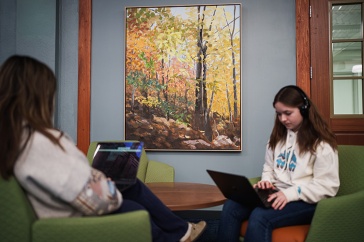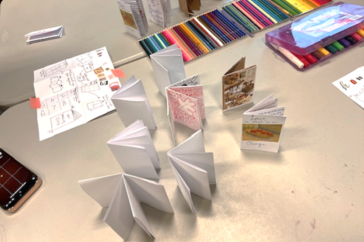
Built in 1919, Huddleston Hall hosted plenty of interesting characters in its first century on the Durham campus — from the countless students who took their meals there during the decades it served as UNH’s first dining hall to the alumni couples who have returned to celebrate their weddings with Wildcat friends. The historic building’s first guests of its hundred and first year, however, were of a different variety altogether: 17 soldiers, two chariots and a horse — full-sized museum replicas of sculptures from China’s famed Terracotta Army, which were on display in the Huddleston Hall Ballroom Jan. 22–30.
One of the greatest archaeological discoveries of the modern era, the Terracotta Army was discovered in 1974 by farmers in Shaanxi, China: a collection of some 8,800 life-sized figures of warriors, chariots and horses that had been interred with Quin Shi Huang, the first emperor of China, some two centuries earlier. Created to protect the emperor’s tomb and serve as his army in the afterlife, the terracotta figures are remarkably realistic, with unique facial features and expressions. The exhibit, sponsored by the College of Liberal Arts and the Confucius Institute, took two months to ship from China to UNH. UNH students, area schools and curious locals made the most of the figures’ visit, enjoying lectures and workshops and the rare opportunity to experience a piece of ancient history for themselves.
-
Written By:
Kristin Waterfield Duisberg | Communications and Public Affairs
















































